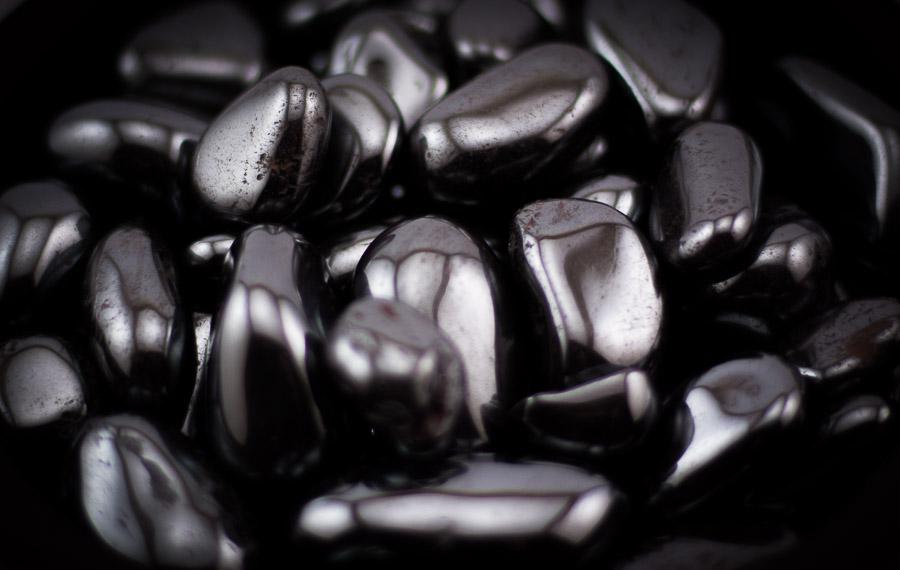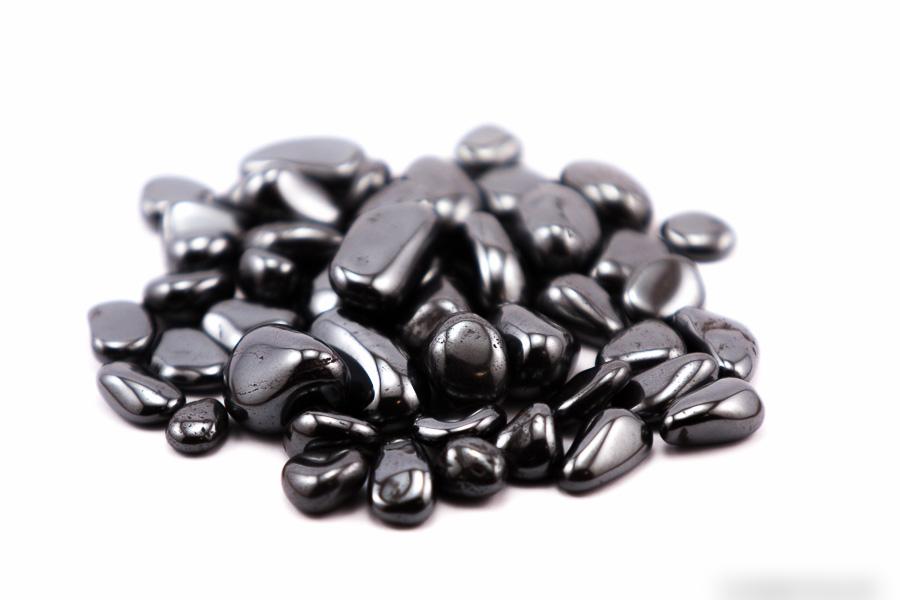You will not be allowed to compare more than 4 products at a time
View compareHematite Tumbled 1 lb
Hematite Tumbled 1 lb
Estimate delivery times:5-8 days.
Flat Rate Shipping and FREE Shipping on orders more than $100.
About This Product
Hematite – The Stone of Steel, Blood, and Boundless Grounding
Introduction
Hematite emerges with a metallic luster reminiscent of polished steel and liquid mercury. Its color ranges from smoky silver-gray to deep iron-black, each facet catching the light like a dark mirror in the dim. Heavy in the hand, this mineral carries a surprising density – a small piece feels weighty, as if infused with gravity. In its presence one senses an ancient solidity, a silent strength forged in the earth’s core. Hematite’s surface gleams with a cold fire, revealing beauty in darkness and a subtle hint of red hidden within its core.
Historical and Cultural References
Hematite has been intertwined with human history since the dawn of art and civilization. As far back as the Stone Age, our ancestors ground it into ochre pigment to paint on cave walls and on their bodies – the earliest known use of hematite powder dates to 164,000 years ago in South African caves. In Ancient Egypt, this stone’s dark, reflective sheen was prized for protective amulets; black hematite headrest amulets were buried with the dead, the color symbolizing rebirth and regeneration. The name “hematite” itself comes from the Greek word for blood, hinting at the rust-red streak it leaves and its sacred status as a symbol of life. Across the ancient world, from Rome to Indigenous traditions, hematite embodied the power of blood and iron. Warriors in Greece and beyond would crush hematite into red dust and rub it on their skin before battle, believing its blood-like tint made them invincible and courageous. Native peoples and early cultures used hematite-rich clay (red ochre) in rituals, body art, and tombs, linking this stone to both warrior spirit and the cycle of life and death through countless generations.
Spiritual and Metaphysical Symbolism
For centuries hematite has also been revered as a spiritually potent stone of grounding and protection. In crystal lore, it is known as a “grounding stone” that connects energy to the earth, providing stability and a sense of security. Its energy is thought to be calm and anchoring – holding a piece feels like standing firmly on solid ground. Metaphysically, hematite is associated with strength, courage, and emotional balance, helping to dissolve negativity and absorb toxic energies. Many believe that its iron content and blood-like essence give it a special affinity for the blood and body – it has been said to bolster circulation and vitality, lending physical strength and accelerated healing. Placed on the lower spine or carried in a pocket, hematite is often used to activate the Root Chakra, the energy center of survival and stability, to center one’s spirit and imbue a deep sense of being “rooted” in the present. In meditation, its heavy, cool presence can feel protective – like a shield of spiritual iron – instilling courage, focus, and the quiet confidence to overcome challenges.
Decorative and Luxury Appeal
Beyond its mystical associations, hematite has long been fashioned into objects of adornment and luxury. When polished, its gray-black surface takes on a mirror finish that exudes modern elegance and a bold, minimalist beauty. Jewelers throughout history have carved hematite into cabochons, beads, cameos, and intaglios for use in rings, necklaces, and ornamental carvings. In the 19th century, Victorian craftsmen engraved hematite for mourning jewelry, capitalizing on its somber gloss. Today, designers often pair hematite with bright gold or diamonds for dramatic contrast – the gem’s gunmetal shine against warm gold creates a striking, contemporary glamour. Decoratively, hematite also finds its way into sculptures and interior design accents. Artists have sculpted it into smooth spheres and statuettes that glint like antiqued silver, perfect for a curator’s shelf or a luxurious study. Its influence even touches architecture and fine decor: hematite-rich pigments (the source of classic red ochre paints) have colored paints and plasters in grand villas and temples since antiquity. In modern wellness spas and meditation rooms, bowls of tumbled hematite or hematite-lined tiles add a tranquil, earthy lustre while symbolically “grounding” the space. Whether set in a piece of jewelry or placed as a centerpiece on a table, hematite brings a unique blend of industrial chic and timeless earthiness – a statement of luxury that is at once subtle and powerfully evocative.
Scientific Properties
-
Hardness: 5.5–6.5 on the Mohs scale (fairly hard but brittle)
-
Composition: Iron(III) oxide, Fe₂O₃ (approximately 70% iron by weight)
-
Crystal System: Trigonal (rhombohedral lattice structure)
-
Luster: Metallic to splendent when crystalline; dull or earthy when in massive form
-
Primary Sources: Abundant worldwide. Notable deposits in Brazil (Minas Gerais), Australia (Pilbara region), USA (Lake Superior region), England (Cumberland), and Italy (Elba), among others. Often found in banded iron formations and mineral hot spring environments.
-
Other Features: Important iron ore mineral (mined for steel production) with a diagnostic red-brown streak when scratched. High specific gravity (~5.3) gives it a hefty weight for its size. Hematite is opaque and often forms in botryoidal (grape-like) or kidney ore masses, and despite its metallic look it is not magnetic (distinguishing it from magnetite). Its very name “hematite” reflects its identifying trait – the “blood” red streak hidden within its cool, gray exterior, the secret heart of iron that captivated humans since antiquity.
Sub total:
$14.49





 $20.49
$20.49 $17.49
$17.49